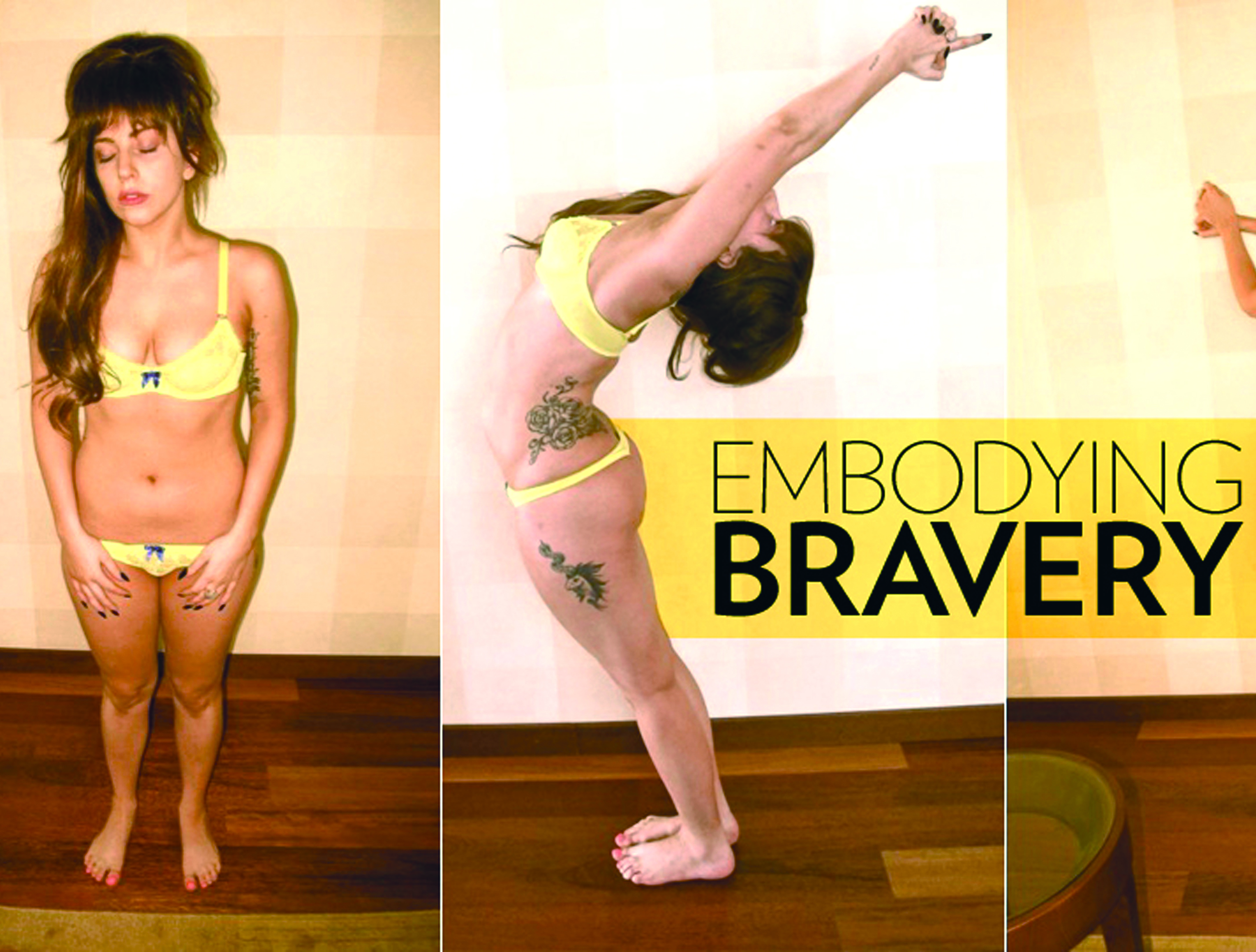Lady Gaga released Joanne, her fifth studio album, last Friday and there’s one overarching takeaway: there’s just about nothing “Mother Monster” can’t do.
Opening with an enchanting Lana-esque build, the installment’s lead hit “Diamond Heart” builds a forceful first track, with Gaga belting, “I might not be flawless, but you know I’ve got a Diamond Heart.” She begins in a low, opera house vibrato that tunes listeners in and then shatters any doubt after her two-year hiatus by offering a rock-like sound that persists through the rest of the track. The overall feel is removed from the album’s general aesthetic of stripped down, crackly vocals — but, still, that passionate, all-American vibe in “Diamond Heart” comes through in the tracks that follow.
Through and through, Gaga sings above an array of accompaniments — electric guitar in “A-YO,” the twangiest of the bunch, and soft piano in “Just Another Day,” a light-hearted Kate Nash-reminiscent tune. Still, she never strays from a wholesome, raw sound — highlighting her immense vocal range, which often moves from rumbling baritone to glass-shattering soprano.
The record doesn’t offer any obvious hits — they’re all equally captivating — but, strangely, it’s clear the album won’t find its success in awards and accolades. It’s exploration of a new sound in Gaga’s repertoire is where it finds its triumphs — that new sounds most clearly embodied in “A Million Reasons,” the most emotionally jarring of the bunch.
Typically, Gaga’s celebrated for generating pop music of an astoundingly higher caliber than that of hook-reliant performers like Katy Perry; she even shouted “Pop music will never be lowbrow” in a 2008 performance on “So You Think You Can Dance.” And, whether known or not, she’s had a major hand in the ongoing rebranding of what constitutes “pop”— alongside projects such as Rihanna’s drugged-out ANTI, Sia’s tormented 1000 Forms of Fear and Beyonce’s Lemonade, carried by a nearly hour-long visual production.
With Joanne, Gaga’s not making pop music at all, though — or at least not in the traditional sense.
Her work’s poetic, with each track telling its own story.
She’s canned a focus on hooks and radio-ready sentiments and, instead, drawn her attention to breathing life into a, sometimes, lifeless genre: country (at least the bulk of her long-held fans might agree it’s lifeless).
In all this, though, Joanne’s even further appreciated by looking at the archive of genre-expanding albums the singer’s put out.
Her 2008 breakout record, The Fame, rose the standard for traditional pop artists — playing with simplistic sounds and evocative lyrics, both of which were reciprocated in her astoundingly thought-out music videos and live performances.
It was all about sex, faulty love, partying and more sex. In short, the album focused on the often sumptuous and sinful construct of “fame.” She showed us she’s nothing short of a walking piece of art, too — one which, as art typically does, makes the public think (granted, with Gaga, those thoughts take form in a variety of capacities).
During a 2009 VMA performance of “Paparazzi” she suspended herself, drenched in faux blood while performing. She wore a suit made of bubbles for a jam sesh on the Ryan Seacrest Show and a meat dress on the 2010 VMA’s coveted red carpet. Keeping us at the surface of her artistry, as many pop performers do, she sang of double-entendre “disco sticks” and the industry’s controlling materialism. Generally, Gaga confused us all—but it worked.
The Fame Monster served as a further expansion of Gaga’s sexually charged sentiments, giving way to one of the most well-known works in modern history, “Bad Romance.”
Gaga took up a rock angle for Born This Way, lined with telling tones of her admitted musical influences—among those being Queen’s late Freddy Mercury and the late David Bowie.
Her most abstract (and unacknowledged) effort to date, ARTPOP, forced the singer’s lyricism to the background— all in the name of crafting her typically personal lyrics around booming electronic beats. It was a throwback to her youthful nights spend as a New York City singer/go-go dancer and, as she told in a number of interviews, was one of her first projects where she shelved promotion and playtime in the name of thoughtful exploration.
Too, on Cheek to Cheek, Gaga tackled jazz alongside big band and show tune mastermind-singer Tony Bennett. In a way, Nancy Sinatra’s sultry and ever-so-sensual humming was infused in Gaga’s renditions of classics such as “It Don’t Mean A Thing (If It Ain’t Got That Swing)” and “Bang Bang (My Baby Shot Me Down)”— something unexpected based off the standard set by upbeat dance tracks, like “Poker Face.” Even though fans were disappointed in this first, solidified stray from her original, sex-positive image, few dared question her classically trained sound.
Now, with the addition of Joanne to her singer’s resume— with endless bullet points of accomplishments, pages laminated with diversity—it’s hard not to consider whether or not Gaga’s proving a point. The question: Is she more driven or just more capable than those often scratching at her ankles as she consistently sits atop the Billboard Hot 100s?
In an Oct. 21, Good Morning America interview, the 30-year-old singer admitted to the album’s country influences.
“My mother’s from West Virginia and I grew up listening to country music with her,” she told GMA’s Michael Strahan. “I’ve dated my fair share of cowboys, as well — so that had an influence.”
In essence, though, Gaga sums up her artistry in one, concluding statement in the interview: “It’s my brand of pop.”
Gaga’s legacy is undoubtedly carried by her piercing vocals and knack for fitting melodies but, really, she mainly differentiates herself in her artistic inclusion — exploring genres and adapting them for the pop music scene.
mcgurllt14@bonaventure.edu








